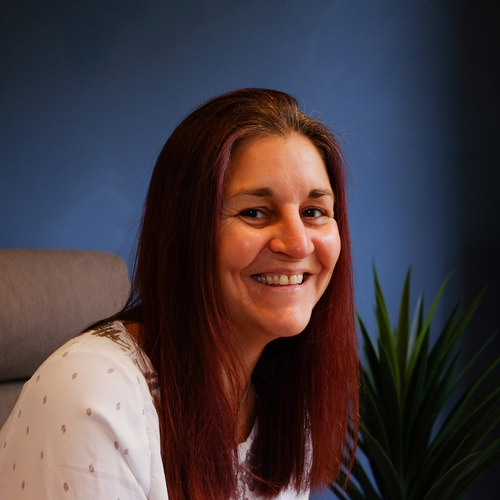The world is changing faster than ever. Global politics, technology, and AI are challenging what we thought was core to our roles. As Brené Brown warns:
I hear experts trying to soothe people’s anxiety about AI by offering platitudes like, ‘What makes us human will ensure our relevance.’ This is dangerous because, right now, we’re not especially good at what makes us human.
Standing out and innovating in this rapidly shifting landscape requires creative, innovative thinking. But how do we get that?
Is it about the skills we recruit for? Or perhaps bringing in different generations to shake things up? Maybe it’s about well curated office environments, or the balance between home and office working?
Perhaps. But most importantly, it’s about the conditions that we create in our organisations to allow high quality thinking, innovation and creativity to thrive.
The solution lies not in doubling down on traditional leadership approaches, but in creating the psychological conditions where human potential can actually emerge and thrive.
As Timothy R Clark argues in his book “The four levels of psychological safety”, creative thinking in teams needs two essential elements:
Low social friction and high intellectual friction
Getting the balance between these elements just right creates the conditions for people to think independently and at their very best.
This isn’t about everyone getting on and always agreeing – innovation thrives on difference and courage.
Low social friction on its own for example, might look like everyone seeming to agree, silence being mistaken for agreement or only certain people speaking up in meetings. It can look great on the surface, but in reality there’s a lot more people pleasing going on than creativity and innovation.
In contrast, on its own, high intellectual friction can lead to conflict spilling over from differences in ideas and healthy debate morphing into personal conflict, people not openly expressing disagreement but instead having meetings after the meeting. It can look like people actively resisting change, talking behind people’s backs and more. All of which can become toxic very quickly.
To create an environment where teams will be courageous, and so innovate and think creatively, Clark argues that we need to aspire to “Challenger level safety” – the highest level of psychological safety described in his book. When this is present, people feel able to challenge the status quo, question assumptions, propose bold new ideas and even challenge the boss. Very few organisations truly achieve this (I don’t think I’ve come across one that achieves it really consistently), though many business owners may believe that they do. Margaret Heffernan, in her book Wilful Blindness, quotes research that only 15% of people say they speak up about problems in their organisation. That’s a pretty low statistic. This points to many business owners and leaders being mistaken about the safety they create.
When we get this right though, team meetings have high engagement, everyone is contributing equally, differences of opinion are openly voiced and we get high levels of buy-in and accountability to decisions.
It looks like “why do we do it that way” being met with interest and openness and not defensiveness and irritation.
It looks like lots of “I don’t know that I’m right, but this is what I currently think” instead of “this is what you need to do”.
It feels like confidence that no matter what I say, if what I think is put forward thoughtfully and respectfully, no-one will think worse of me for it.
Challenger level safety demands a shift from traditional directive leadership to creating space where everyone belongs as they are, valued for their unique contribution. Leaders must develop skills in genuine connection. From facilitating consistently great meetings and interactions that unlock people’s best thinking, to practicing humility over hubris, and dedicating time to think.
Stay in your lane: less leader talk = more team thinking
Is communication effective in your organisation? Has your team ever suggested that it could be better?
What was your response when they did? What did you try? Did it work?
Many of us, when challenged to communicate better, think it means we have to talk more. Perhaps thinking that we have to think of every possible question that might be asked and answer them all in one go?
I recently watched one business owner talk to their team for 20 minutes, going into loads of detail and then ask “any questions” only to be met with silence. They assumed that was because they had done a great job and answered all the questions… I’m not sure that was true!
I definitely used to fall into that trap too though. It’s an easy one if we’re not conscious of it.
But what if it has the opposite effect to what we are looking for? What if speaking more actually erodes the very challenger safety we’re trying to create?
Here’s the thing: when leaders fill all the airspace with detailed explanations, step-by-step instructions, and preemptive answers to every possible question, we’re sending a clear message: “I need to think for all of us.”
That’s the opposite of challenger safety. It’s one of the things that creates the 85% of people who don’t speak up about problems in their organisations.
Communication for challenger safety isn’t about what we say – it’s about the space we leave for others to think
When you speak for less time and concentrate on your highest point of contribution – the vision, purpose, and strategic context – something shifts in your team’s minds.
Suddenly there’s space. Space for them to work out solutions. Space to be creative with their ideas. Space to bring you solutions rather than problems.
More importantly, when you demonstrate what it means to stay in your lane and be accountable for that strategic level, you create the expectation that others need to step up in their own lanes too and think for themselves.
This isn’t about being distant or unhelpful – it’s about creating the conditions where challenger safety can emerge. Because people can’t challenge the status quo or contribute their best thinking when they’re busy trying to keep up with everything you’re telling them.
What to try
- Work on thinking and communicating at a higher level than you are used to:
- What’s the vision or the purpose here?
- What are the values?
- What’s the strategy and how does it all align?
- Be disciplined
- What’s your highest point of contribution?
- How will you communicate in ways that are consistent with that?
- How will you keep it brief?
- Check yourself for clarity and consistency. Ask yourself:
- Am I being as clear as possible?
- Is what I’m saying here consistent with the other messages I need to communicate?
The courage to not know
As leaders, we can think we need to have all the answers. To fix problems, and give people solutions.
But what if that’s the problem not the solution?
What if acting from that assumption means that we are damaging exactly the kind of safety that we need to create for creativity to thrive?
What if it as an extra “Brucie bonus”, it also drives disengagement?
Could changing that mindset be the key to releasing the untapped potential that exists in the team you worked so hard to recruit and train?
Own your part with courage, and support others to own theirs
To invite and reaction positively to challenge takes courage – that’s your 50% of the responsibility in the relationship with your team.
To stand up and share, and offer the challenge when invited also takes courage – that’s their 50%.
The reality is:
- We don’t have all the answers! Others usually have more information and different perspectives to us that are WELL worth listening to
- Giving answers builds and maintains reliance on us. That keeps us stuck in overwhelm and feeling like we need to control everything.
- If we appear invincible, others feel they need to do the same. That means they won’t be brave, they won’t share their half formed ideas, and they will self-protect. They might not even tell you if they’ve made a mistake – and that’s really dangerous.
If we can change, then we can:
- Encourage others to step up and be courageous with their thinking – that’s where the creative innovative magic will emerge.
- Encourage genuine collaboration where we work WITH our teams to come up with the best answers rather than them feeling in competition with us.
- Remove a vast number of emails and queries from our inbox and to do list!
What to try
- Say when you don’t know
- Even when you think you know, either hold back, or hold it lightly. It’s probable that better thinking will emerge from collaboration than from one mind alone.
- Invite challenge. Say it often and ask for it specifically.
- “What am I missing here?”
- In what ways do you see things differently from me?
- Learn some basic coaching techniques and questions
- Start with the simple question “Although I have some ideas, first, what do you think?”
See mistakes as learning opportunities
How are you with making mistakes? Do you beat yourself up for them? Do you feel shame if you don’t get things right?
How are you with other people’s mistakes?
Personally, when I feel like I’ve made a mistake I beat myself up more effectively than anyone else ever could! As a result when others make mistakes I am forgiving and understanding because I assume they will do the same and will be punishing themselves so why make it worse. It can mean that I struggle to hold people accountable too though, and that’s not a good thing.
What that also means though, is that when I see someone heading for a cliff edge, about to make (what I think will be a huge mistake) my inclination is to try and stop them before they fall off!
I’ve come to realise that my behaviour because of that can be really stifling. Because I also recognise that the biggest learnings of my life have come from what I perceived as monumental failures at the time.
Carol Dweck (Professor of Psychology at Stanford University and one of the world’s leading researchers on motivation and mindsets) encourages us to embrace failure as a learning opportunity. You can see her talk about this in her now famous TED talk. She wisely says:
It is hard to fail, but it is worse never to have tried to succeed
So when we offer our advice, or solutions, or steer people away from the cliff edge that they’re heading towards, we are reducing their capacity for perseverance, resilience, effort and making them more likely to shy away from challenges rather than thriving on them.
None of which is useful for creativity and innovation! None of which encourages challenger level safety in anyone but ourselves.
When we’re starting to delegate more authority, watching mistakes play out can be agonising. We need to recognise that “different from how we would do it” does not equal wrong.
Something that can be really helpful though is the concept of waterlines from Aaron Dignan’s book “Brave New Work”. This basically means defining what levels of decisions can be made by who in your organisation (perhaps determined by financial impact, level of client impact or other factors that you decide). A financial example might be:
- Up to £150, you can decide to spend
- Up to £1,500, you can decide to spend with your line manager
- Up to £15,000, you can decide to spend as a cross-functional team with a Director involved
- Above £15,000, needs board approval.
These are arbitrary amounts, but you get the idea and waterlines can gradually shift over time as people get more used to having more autonomy and grow in confidence and ability.
If we implement this well, mistakes become less scary for all concerned and when that happens safety improves and creativity starts to flourish.
What to try
- Set your waterlines carefully and review them regularly
- Learn when to sit on your hands – if you’ve got your waterlines in place, this will be easier
- Offer support but don’t force the issue – make sure people know that you’re there if they need you – delegate the project, having communicated clearly (see above!) but also remain available if your input is requested.
- Give only information experience or knowledge – NOT ADVICE! Only when asked, and accept that they might not listen to it (and you might need to watch it pan out from the sidelines)
- Say what’s good at least 5x more than you criticise (this is foundational for healthy relationships as shown in this enlightening research by the Gottman Institute)
Prioritise thinking time
When leaders don’t create thinking time, no one else will either. But when we don’t allow ourselves time to think well, we end up making poor decisions, putting out fires rather than tackling the source issues, and often reacting emotionally without even realising it.
But I don’t have time to think!
So often I hear “I just don’t have time to think”. Or “I schedule thinking time in my diary, but there’s always something more important that crops up”.
I don’t buy it.
Good thinking can’t wait until we can find time.
Prioritise your thinking in the short term and I promise that you will save time in the medium and long term, and after all, shouldn’t all leaders be thinking longer term than the end of their nose? We need to slow down in order to speed up. Stop putting out fires and think about why they’re starting in the first place.
So if something needs to give in order to make space for better thinking, then you need to decide what it is, and act decisively.
Perhaps it’s a meeting that you don’t need to be involved in. Perhaps it’s client relationships that you’re clinging on to and could be handed on. Perhaps it’s that project that doesn’t need to sit with you after all.
Only you will know, but even if it just starts with an hour each month with a great thinking partner or coach, plus 30 minutes each week to think independently – make it happen.
What to try
- Challenge yourself to stop doing something – right now!
- Schedule thinking time at least once a week. Start with 30 minutes, and build (quickly) to an hour. Before you know it, you will be so desperate to think regularly that you’ll want half a day every week
- Find yourself someone to think with – perhaps a professional coach or thinking partner, or a peer who understands your situation
- Protect that time fiercely
Creating the conditions where innovation thrives
These four elements – conscious communication, intellectual humility, embracing mistakes, and protected thinking time – aren’t separate skills to master. They’re interconnected components of a thinking system that transforms how teams operate.
When you communicate more briefly and at a higher strategic level, you give clarity and create space. When you admit you don’t have all the answers, you invite others into that space. When you treat mistakes as learning opportunities rather than failures, you make that space psychologically safe. And when you protect time for thinking (starting with you), you ensure that space gets used for its highest purpose.
The magic happens in the intersection: Brief, humble communication creates intellectual space. Safe mistake-making fills that space with courage. Protected thinking time ensures the space produces innovation rather than just activity.
This isn’t about being a “nicer” leader – it’s about being a kinder, more effective one. As Timothy Clark shows us, challenger level safety isn’t soft; it’s the hardest level to achieve because it requires leaders to fundamentally shift from being the source of answers to being the creator of conditions where the best answers emerge.
The organisations that master this won’t just survive the rapid changes ahead – they’ll be the ones shaping what comes next. Because when everyone in your organisation feels safe to challenge, question, and contribute their best thinking, you’re no longer limited by what you as a leader can imagine. You’re powered by the collective intelligence of everyone you’ve worked so hard to recruit and develop.
The question isn’t whether your team has the potential to innovate and think creatively. The question is whether you’re creating the conditions where that potential can flourish.
Start the (r)evolution
If you really want innovation and creativity to thrive in your organisation, as a leader, you need to work on yourself first. But that’s tough, so we’re likely to give up when we find it hard, or fail the first few times. We’ve all been there!
I read Dawn French’s autobiography recently and was taken by her thought that
I can be remarkably stubborn because it’s easier to carry on ploughing the same familiar furrow, even if it yields nothing.
We don’t rise to the level of our goals, we fall to the level of our systems – James Clear
Creating structures can help us to stick to our guns, to try again when it doesn’t immediately work as we intend! To support us in making change when it’s uncomfortable and feels counter-intuitive. So how about trying one or more of these few things to start with:
- Create some time – work out what you can stop doing to create time for yourself to think
- Use that time to work ON your business. Be it high level strategic thinking, how you communicate that, or what the real issues are that you need to work on. It might cost you time in the short term, but it will absolutely save you time and money in the medium and long term
- Listen well – deliberately work on your ability to listen with interest (not just waiting your turn to reply) and without interrupting
Meeting structures – a final word
One of my personal missions is to make meetings more effective and waste far less of people’s time and energy in meetings that are unproductive, uncreative and a waste of time. So I have three recommendations for building structure into your meetings that will begin to improve psychological safety from day 1:
- Introduce a promise of no interruption
- Go around the table, and ask for input from everyone, in turn, on every agenda item
Then think PEA!
- Why are we meeting? (Purpose)
- What’s the big question we’re trying to answer? (Essence)
- What questions help us get there? (Agenda)
Watch it work and ask your team how they found the experience.
It’s simple, but not easy
There’s no rocket science here, but it does require practice and consistency.
You’re used to communicating and behaving in a certain way. People are used to you being a certain way. They are used to operating within systems that operate in a certain way.
So give yourself some grace and don’t give up at the first hurdle!
If you would love to elevate your team to challenger level safety, to increase creativity, innovation and engagement, check out our Transforming Meetings™ training day for teams. Alternatively come along to one of our Thinking Environment Foundation courses to elevate your skills as a leader.
If you would like to chat about different options, including carving out time for yourself to think with me, get in touch or book in for a chat here.
Photo by Matt Ridley on Unsplash






0 Comments